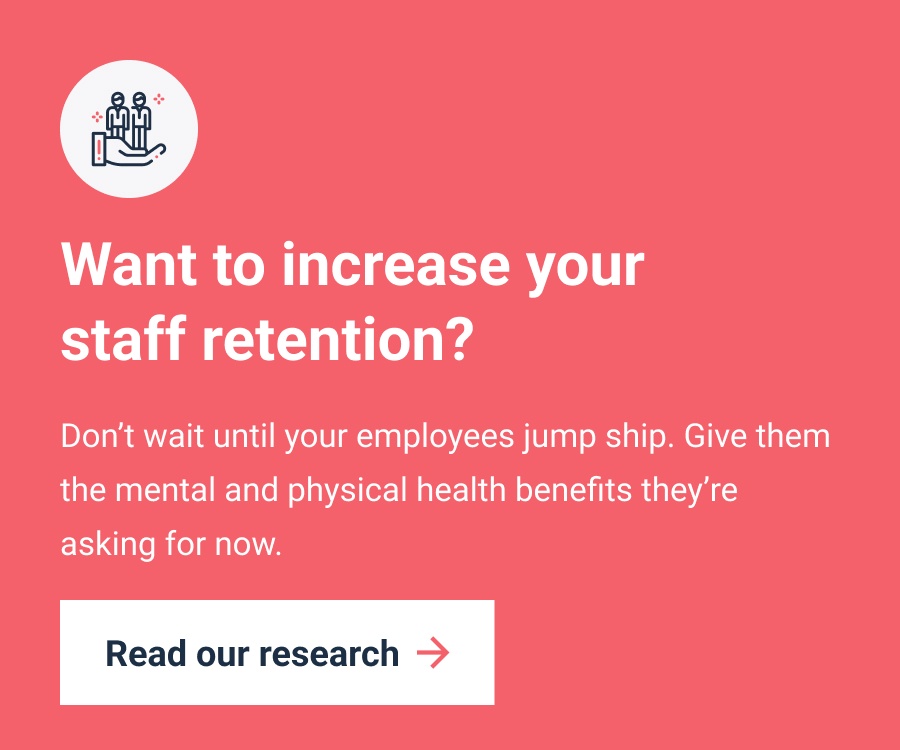In an increasingly hybrid world, casual Fridays and after work drinks aren’t the draw they once were. Employees want more than just a competitive salary and a few perks at work. The right benefits package is key to attracting and supporting talent. And, in this new landscape, flexibility is all-important.
According to research, 73 percent of job seekers say the employee benefits package would factor in their decision to turn down a role. 64 percent believe organisations are putting money into benefits that employees don’t want or need.
Assess your benefits offering
Lots of employers don’t feel confident about the benefits they provide. In fact, just 42 percent believe they’re meeting employee needs and only 13 percent feel that their communication is very effective.
If you have doubts about your own offer, it’s time to ask your employees. They know what they want better than you do.
Assessing current take up is job one. This will tell you plenty about what people are responding to, and what perks are proving less desirable. Beyond that, surveys and conversations are the surest way to gauge expectations and identify gaps. This remains true even if your benefits software provides ongoing insights. Equipped with information, you can improve your approach.
Benefits must be more than perks alone
Research by Cyclescheme tells us that 85 percent of employees don’t think that quick-fix perks would improve their happiness at work. Employees value things like sick pay, mental health and wellbeing provision and private health care.
Gen Z are more likely to prioritise their wellbeing than any other generation, while 82 percent of employees, across the board, recognise the link between mental and physical health. It’s no surprise then, that organisations are spending more on workplace health and wellbeing.
Gym memberships are nice to have but people favour benefits that support their mental, emotional, physical and financial wellbeing.
Flexible benefits are the future
The one-size-fits-all approach simply doesn’t. A study carried out by future-focused business network Future Workplace, found that Gen Z feel more prioritised than Boomers. Gen X, many of whom have responsibilities to children as well as aging parents, prioritised financial wellbeing. It’s natural that people with different life circumstances have differing priorities.
Workplace motivation and productivity improve when everyone feels valued. So, the only sensible approach is a flexible one.
When it comes to workplace health and wellbeing, for example, we take a holistic approach. Employees can perform self-assessments and choose the areas they want to focus on. Our technology allows them to tailor their experience, take part in self-therapeutic programmes and get easy access GPs and clinicians when they need them. You get insights into their usage and proof of return on investment.
Flexibility also means convenience. The majority of employees want to be able to access health-related benefits online or via an app.
Look for partner organisations able to offer a wide range of flexible benefits, robust technology with multiple access points and ongoing reporting.
Ask your employees for feedback and keep asking them
If the past few years have taught us anything, it’s that things can change a lot in a short space of time. This is true on a societal level and a personal one. What someone needs today, may not be a priority in a year’s time.
Of course, you need a read of the current landscape, so you know which direction to head in. When updating your employment benefits package though, keep in mind that the lines of communication must remain open.
Forty-two percent of HR professionals don’t measure employee appreciation of their benefits. If you’re amongst that number, you could be wasting money. So, if you want to offer competitive work benefits over the long term, start that dialogue.
Developing a benefits package that people use and value, requires an ongoing process of evaluation and evolution. Instead of seeing this as a cost, view it as an investment in your people and their productivity.
Don’t overcomplicate
The process of gathering data doesn’t have to be onerous. We designed our comprehensive health and wellbeing platform to simplify provision for busy HR teams. You can get insights into usage, and measure what’s working, any time, via the Symbio Hub.
To discuss providing personalised health benefits, GP access and clinical support to your employees, when and how they need it, contact us.





